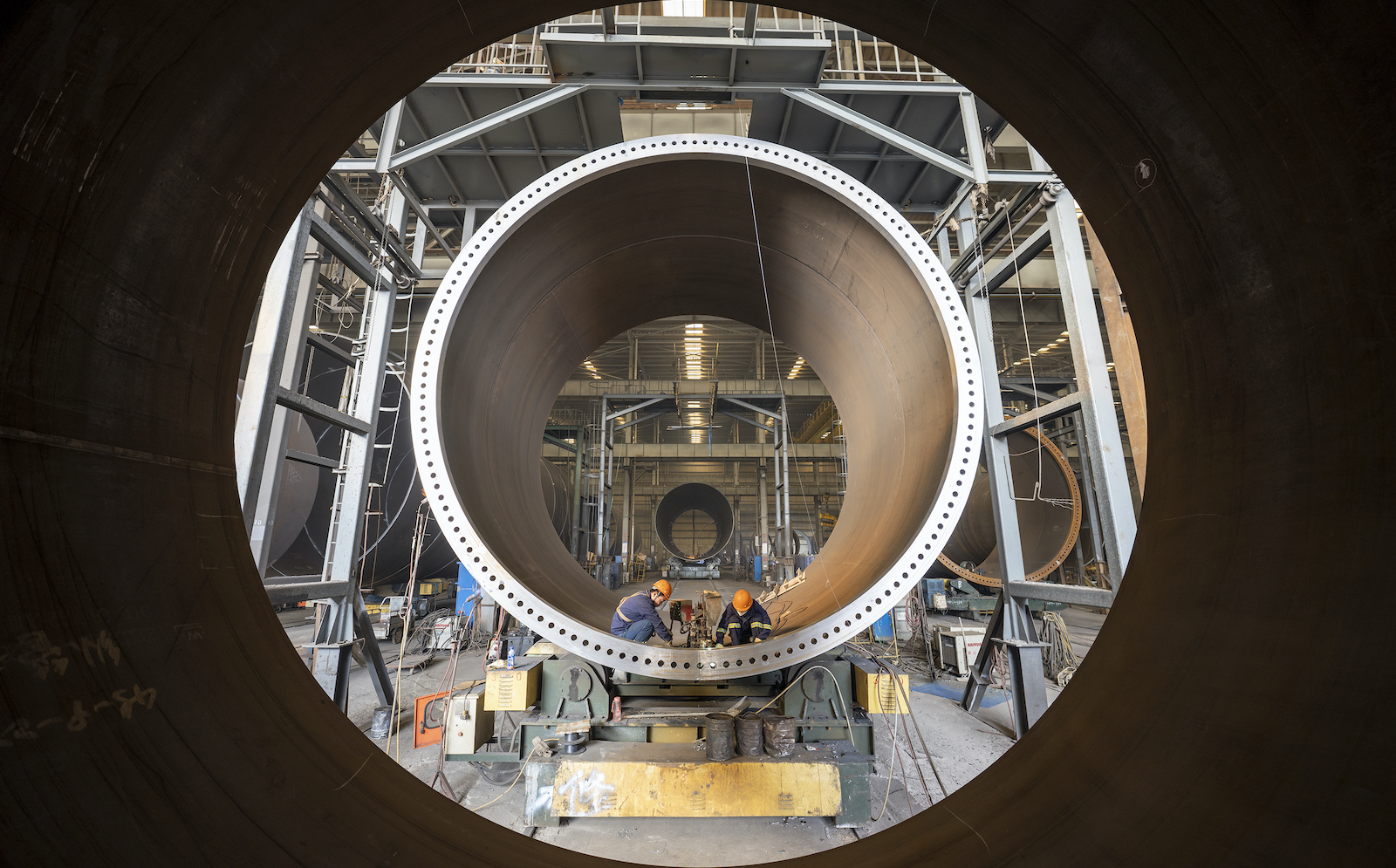The Biden administration frames addressing the climate crisis as the greatest opportunity to create jobs in generations. It’s a claim that many of the workers watching the number of well-paid, unionized jobs in fossil fuels diminish are skeptical of. But an announcement made last week offers a preview of what’s in store if the energy transition is fueled by Made-in-America technologies.
US Wind, a developer of offshore wind farms, announced plans to expand its in-development 22-turbine project off the coast of Maryland, adding up to 82 more turbines that will make the facility capable of powering half-a-million homes. In conjunction with the expansion, US Wind has also proposed constructing a new wind turbine manufacturing facility just outside Baltimore.
The plant, called Sparrows Point Steel, will fabricate monopiles, the steel foundations that anchor giant wind turbines to the seafloor. It will sit on the site of the former Bethlehem Steel Corp. mill and shipyard, which during its heyday produced steel for World War II ships and the Golden Gate Bridge, according to E&E News.
The new wind farm off the coast of Maryland alone is estimated to create 3,500 construction jobs and 100 operations jobs, according to US Wind. But the company says the steel plant could create an additional 500 permanent jobs once it’s at full capacity — most of which are promised to be well-paid union jobs. US Wind has already entered into a memoranda of understanding with the United Steelworkers union, local branches of the International Brotherhood of Electrical Workers, and the Baltimore-D.C. Building Trades council, agreeing to hire union labor for construction and manufacturing.
Jim Strong, assistant to the director for United Steelworkers, said he expects his members to fill roles in welding, operating machinery, fabrication, and crane operations. “These will be high paying jobs that are going to require certain skills,” he told Grist. Strong said the United Steelworkers first began talking to US Wind about the facility three and a half years ago. They knew Sparrows Point, the area that will house the monopile factory, would be an attractive location for the offshore wind industry — the 3,100-acre deepwater industrial port has access to an existing shipping channel and other useful infrastructure. Nancy Sopko, director of external affairs for US Wind, told Grist it was cheaper to build the monopiles in Maryland because it eliminates expensive transatlantic shipping from Europe.
Sparrows Point will have some competition: In April, developers building a wind farm off the coast of New Jersey broke ground on a monopile manufacturing facility on the Delaware River at the Paulsboro Marine Terminal. The companies behind the project — Danish offshore wind company Orsted, New Jersey utility PSEG, and steel pipe manufacturer EEW — entered into union agreements for the construction of the monopile facility, but they have not yet made any announcements about whether the manufacturing jobs will also be unionized. The companies did not respond to a request for comment.
New Jersey Governor Phil Murphy also hopes to attract wind turbine component manufacturers to a second port the state is developing on an artificial island in southern New Jersey. And New York State is investing in a wind turbine manufacturing site at the Port of Albany. Currently, domestic manufacturing supplies about 79 percent of the supply chain for land-based wind projects in the U.S., according to a recent working paper by Princeton University researchers that looked at the cost impacts of applying high labor standards to manufacturing of clean energy components. The Maryland, New Jersey, and New York facilities would be the first in the country to build offshore components.
The boom in offshore wind development along the U.S. East Coast has been driven by state-level policies mandating that utilities procure a certain amount of power from offshore wind. If Congress is able to pass a clean electricity standard — a policy that would set benchmarks for utilities around the country to obtain a certain amount of clean electricity — it could signal new private investment across the supply chain, for wind and for other clean energy technologies. And if the bipartisan infrastructure plan that Congress is hammering out goes through, many more clean energy manufacturing jobs could be on the way.
The current infrastructure bill includes $750 million in grant funding to support advanced energy manufacturing facilities or to reduce emissions at manufacturing facilities. It also invests heavily in domestic battery manufacturing, with millions for critical minerals research, $3 billion for battery material processing, and $3 billion for battery manufacturing and recycling.



